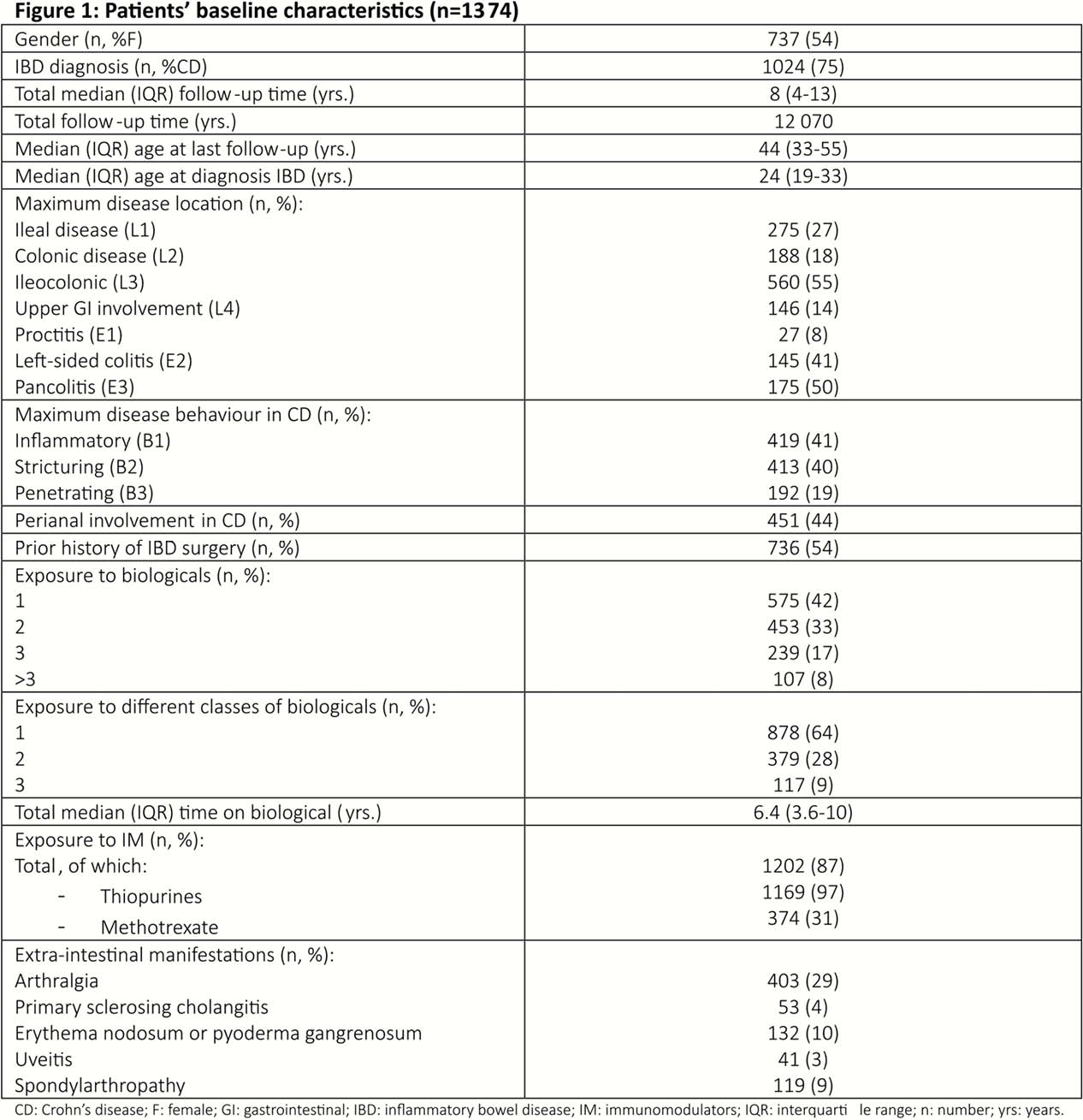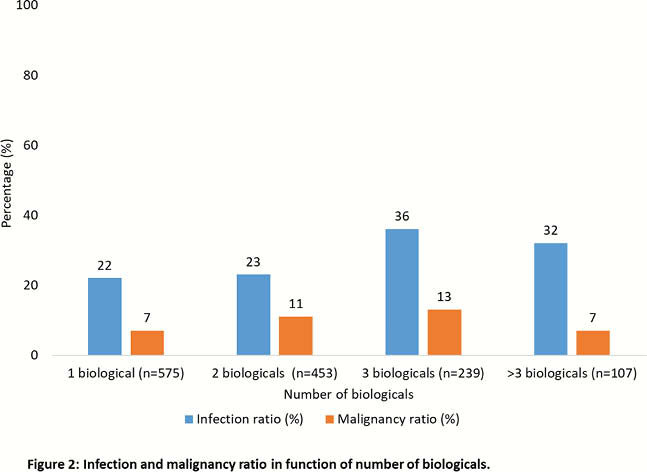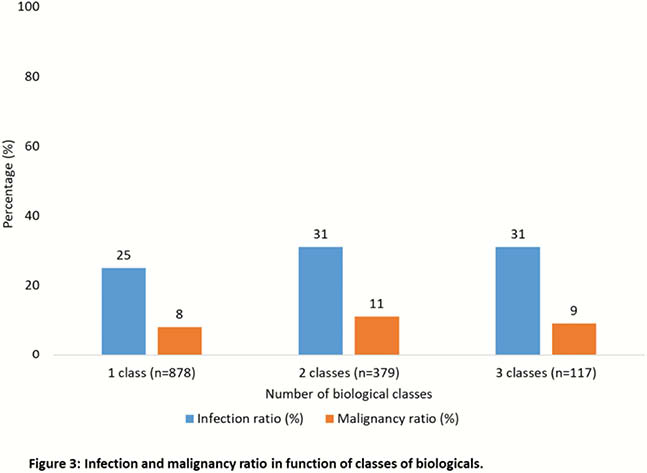P553 Safety of the sequential use of biological therapy in inflammatory bowel disease: Results from a tertiary referral centre
A. Moens1,2, V. Ballet1, J. Sabino1,2, S. Vermeire1,2, M. Ferrante1,2
1Department of Gastroenterology and Hepatology, University Hospitals Leuven, Leuven, Belgium, 2Department of Chronic Diseases, Metabolism and Ageing, Catholic University Leuven, Leuven, Belgium
Background
Switching between biological therapies is frequently observed in the routine management of inflammatory bowel disease (IBD). Yet, it is unknown whether sequential use of biologicals affects safety such as serious infections and malignancies. We aimed to compare the occurrence of serious infections and malignancies in regards to the number and classes of biologicals to which patients were exposed.
Methods
This retrospective cohort study included all IBD patients exposed to commercially available biologicals from 1999 to 2019 in a tertiary referral centre. Follow-up started at initiation of first biological. Exclusion criteria included: patients <18 years, episodic administration of biologicals or administration for another indication than IBD and loss to follow-up <2 years after initiation of first biological. Via review of full electronic medical records, we studied the development of serious infections (defined as any infection leading to hospitalisation or treatment change) and malignancies. Poisson and Cox regression models were used.
Results
In total 1374 patients were included (Figure 1). During a median (IQR) follow-up of 8 (4–13) years, 373 serious infections and 127 malignancies were reported in 245 (19%) and 92 (7%) patients, leading to an incidence rate of 2.2 and 0.8 per 100.000 patients per year, respectively. The number of serious infections was dependent on prior exposure to immunomodulators (IM,



Conclusion
In this large single-centre cohort study spanning 20 years, the overall risk of serious infections and malignancies in patients exposed to biologicals remains low, yet the risk increased with more and sequential use of biologicals so close vigilance is needed.


